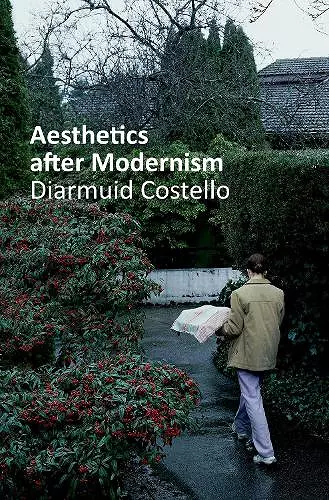Aesthetics After Modernism
Format:Hardback
Publisher:Oxford University Press Inc
Published:23rd Dec '24
Should be back in stock very soon

Aesthetics after Modernism defends the ongoing relevance of aesthetics to art after modernism. Diarmuid Costello traces the art world's rejection of aesthetics to Clement Greenberg's success in co-opting the discourse of aesthetics, notably Kant's aesthetics, to underwrite a formalist theory of aesthetic value. This has led to Kant's aesthetics being tarred with the brush of Greenbergian formalism; it has also encouraged subsequent critics and theorists to miss the resources in Kant's aesthetics for capturing our cognitive relation to precisely the kinds of art that interest them. There is a tendency to assume that Kant's aesthetics cannot speak to the more cognitive aspects of our engagement with art. Costello offers an interpretation of Kant's aesthetics, grounded in his theory of art, that aims to show otherwise. Conceptual Art provides an instructive test case: here is an art that, at least in its more purist forms, claimed to forgo sensible properties altogether, in favour of direct engagement with ideas. But if Kant's aesthetics can be shown to accommodate our cognitive relation to works with no sensible features relevant to their appreciation, it should be able to accommodate any work of art. Aesthetics after Modernism proceeds in three steps: Part I sets out the internal structure of Greenbergian theory, focusing on the relation between his modernism and formalism, before critiquing each in turn. Part II unpacks the afterlife of Greenbergian theory by considering one sympathetic and one antipathetic response to his modernism and formalism in turn: Michael Fried and Rosalind Krauss for the former, Thierry de Duve and Arthur C. Danto for the latter. Part III returns to Kant's aesthetics, demonstrating that Kant's account of art as an 'expression of aesthetic ideas' is well placed to address the semantic content of genres such as Conceptual Art more commonly thought to exceed its grasp.
ISBN: 9780197756393
Dimensions: 224mm x 152mm x 28mm
Weight: 590g
320 pages